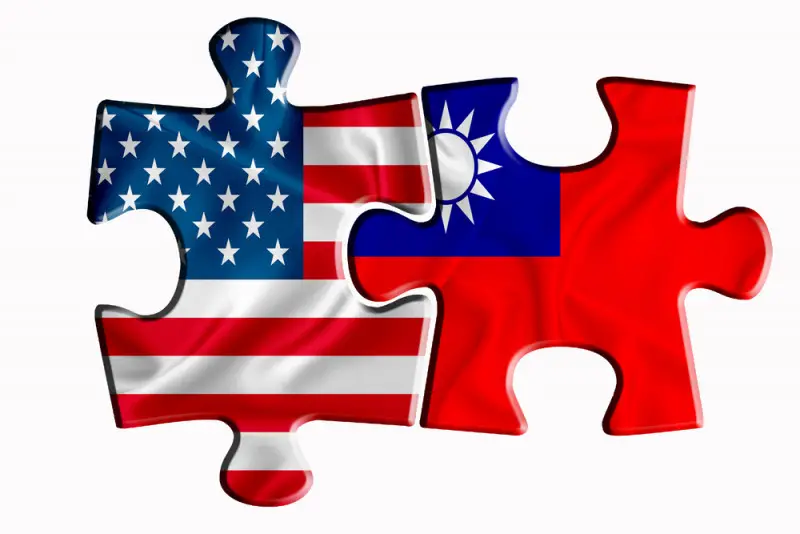Retreat from Afghanistan gives US greater resources to focus on Indo-Pacific
Conservative pundits in U.S. and Chinese state media who see the withdrawal from Afghanistan as a sign of what's to come for Washington’s Asian allies, particularly Taiwan, are mistaken. The withdrawal heralds the inevitable end of an era in U.S. foreign policy that has been coming ever since the Department of Defense replaced terrorism with great-power competition as America’s chief security priority in 2018. The U.S. is not looking for an ‘exit strategy’ from Asia though, and the withdrawal from Afghanistan will only give it greater resources and strategic focus to pursue its new priorities with allies in the Indo-Pacific.

Lighter Footprint
Firstly, these false predictions misconstrue the nature of U.S. security commitments in the Indo-Pacific and ignore the ways in which the practice of Washington’s power in the Western Pacific diverges greatly from the situation in Afghanistan.
Allies such as Japan and South Korea have burden sharing arrangements that split the costs of defense with the U.S.

According to a U.S. government report, from 2016 through 2019, the country spent roughly US$20.9 billion in Japan and US$13.4 billion in South Korea on military-related expenses. The governments of Japan and South Korea provided US$12.6 billion and US$5.8 billion, respectively, equivalent to roughly 40% of what the U.S. itself spent to support its presence there.
In comparison, Washington covered virtually all costs associated with fighting the Taliban, a total of US$2 trillion over 20 years. World Bank data shows Afghanistan’s military spending averaged roughly 1% of its GDP over the past few years. Considering the economy stands at just US$20 billion, whatever Kabul did contribute was a drop in the ocean.

U.S. forces in East Asia are there at the request of the countries’ democratically-elected governments. Despite pockets of political opposition to U.S. presence, such as in Okinawa, nowhere in Japan, South Korea or the Philippines are there insurgencies aimed at driving Americans out, as in Afghanistan. The Philippines’ recent renewal of the Visiting Forces Agreement is proof the country wants the U.S. involved in its defense strategy, despite years of taunts by its populist president to the contrary.
The mission is more straightforward too. In East Asia the U.S. is not rebuilding a war-ravaged country, nor trying to introduce democracy to a largely tribal society. Rather, it is lending its military muscle to back up the well-trained militaries of economically mature, tech-savvy democracies from the aggression of communist China and North Korea.
Asia and Oceania is also the largest importing region for U.S. weapons exports, 42% of the global total. While Australia, Japan and South Korea are the biggest spenders, in 2020 Taiwan bought $5 billion, a new high. As opposed to the financial disaster of Afghanistan, where the ultimate benefactor of arming the Afghan army has been the Taliban itself, the U.S. has clear profit incentives for maintaining its security presence and its lucrative arrangements with its partners in Asia.
Global Economy at Stake
These incentives extend to the functioning of the broader economy though, on which U.S. power depends.
By defending its Asian allies, the U.S. ensures undisrupted access to key components that are vital for its tech industry. By some estimates, Taiwanese contract manufacturers to produce up to 90% of chips used by U.S. firms. Jan-Peter Kleinhans of Berlin-based think tank Stiftung Neue Verantwortung calls Taiwan, “the most critical single point of failure in the entire semiconductor value chain.” Were Taiwan’s industry to go down in a shooting war to China, the impact on the U.S. economy would be catastrophic.

Further south, the U.S. commitment to support global trade routes through the strategic choke points of the South China Sea and Malacca Straits, through which roughly 40% of shipping passes, speaks to its commitments to Singapore and other Southeast Asian nations.
As tragic as the Taliban takeover is, it will neither shock the global supply chain for advanced technology, nor will it disrupt global trade flows. Although there is much talk of Chinese investment in Afghanistan to further its BRI project, current reports show they are overhyped.
Competition with China
Finally, defending allies in Asia directly furthers the U.S. primary goal of containing China’s expansion and maintaining its own geopolitical dominance.
Afghanistan remained a relic from a bygone era when the war on terror was a priority. As leading researcher at think tank CSIS Bonnie Glaser tweeted this week, ““withdrawal from Afghanistan says nothing about US commitment to allies or Taiwan,” quoting Harvard’s Stephen Walt that Afghanistan had become a “less-than-vital interest” to the U.S., while Taiwan remains vital.
If the U.S. hopes to stop China’s rapidly rising blue-water navy from expelling it from the Western Pacific, it must ensure the integrity of the first-island chain. This means standing by the Philippines, Japan, and most critically, Taiwan, the central ‘ring’ that binds this geostrategic chain together.
Were China to break through, it would end U.S. hegemony and allow Beijiing to dominate Asia and threaten its traditional allies, including those as far away as Australia.
As author Anatol Lievan says, China was the “quiet winner” of the war on terror. The conflict distracted Washington and postponed its realization of China as a strategic threat for almost two decades, just as the country was catching a wave of explosive growth after joining the WTO in 2001. That head start has now come to an end as countering China has become the bipartisan priority for Washington. In finally ending it’s forever wars in the Middle East, the U.S. will now have greater strategic focus and resources to devote to better protecting its allies in the Indo-Pacific.

-(1)-thumb.jpg)